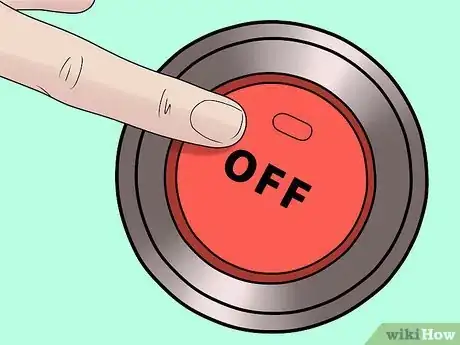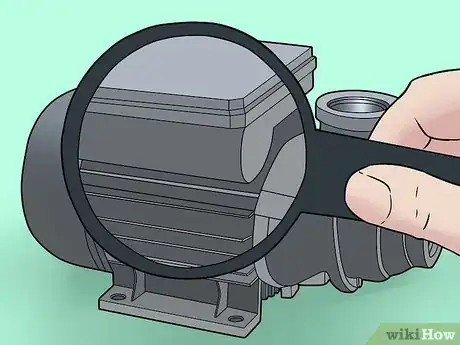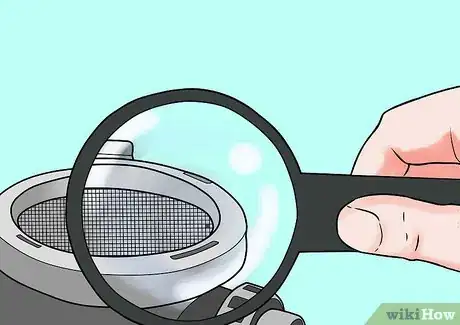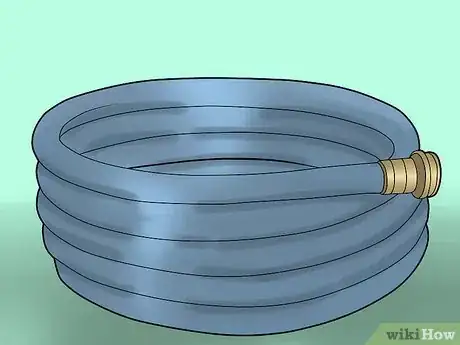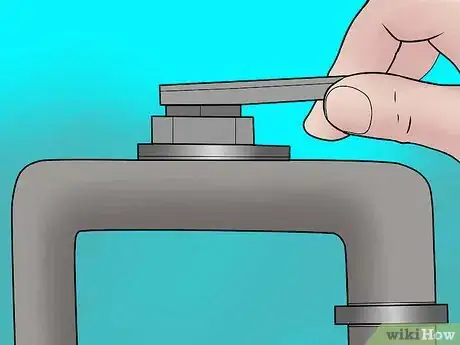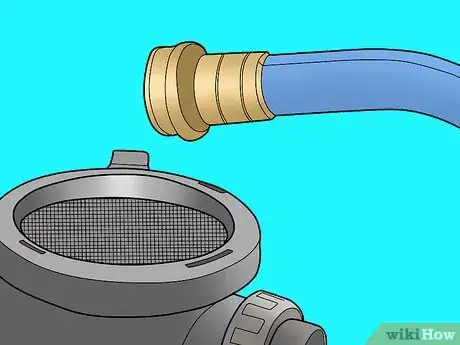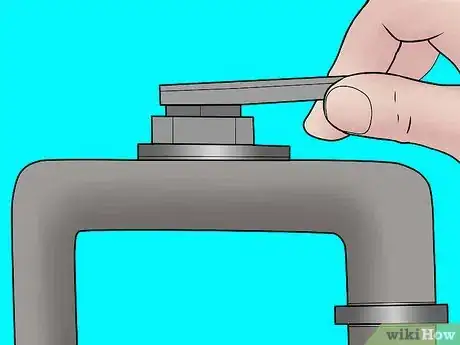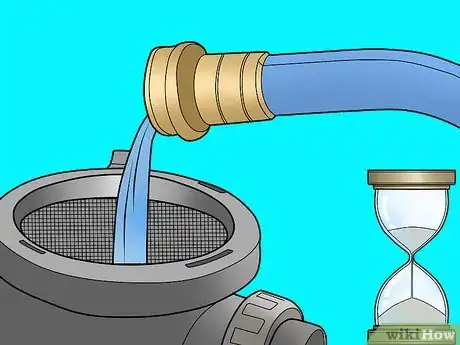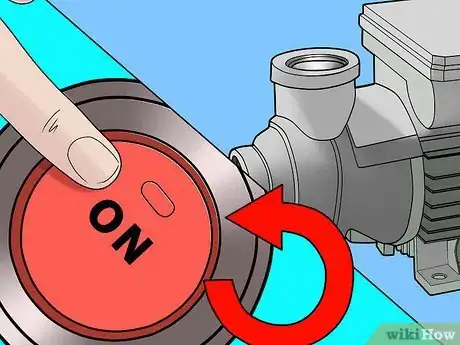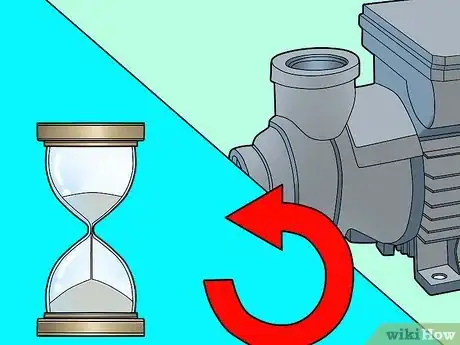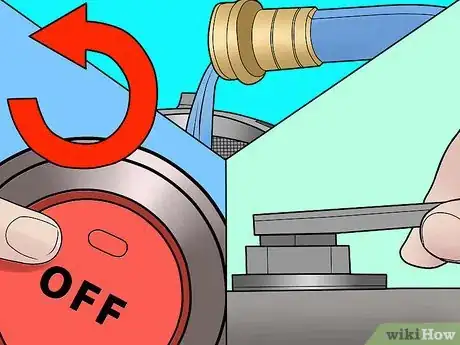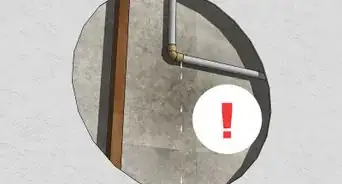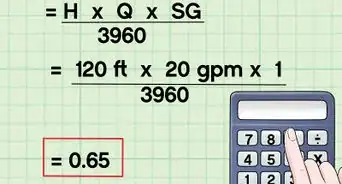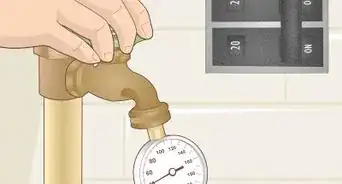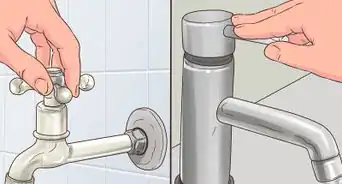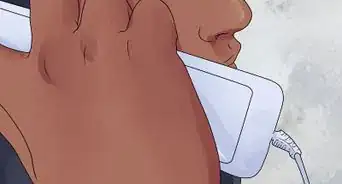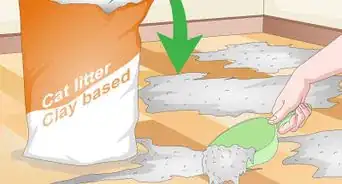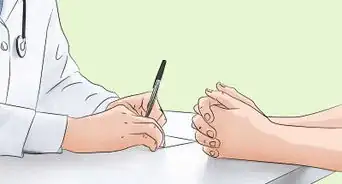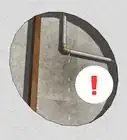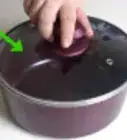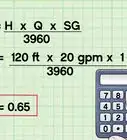This article was co-authored by Anthony "TC" Williams. Anthony "TC" Williams is a Professional Landscaper in Idaho. He is the President and Founder of Aqua Conservation Landscape & Irrigation, an Idaho Registered Landscape Business Entity. With over 21 years of landscaping experience, TC has worked on projects such as the Idaho Botanical Garden in Boise, Idaho. He is a Idaho Registered Contractor and a previously Licensed Irrigator in the State of Texas.
This article has been viewed 368,462 times.
Water pumps will run out of pressure and stop working if turned off for an extended period of time, such as over the winter. In order to get the pump working again, it needs to "primed": water needs to be flushed back into it and forced through in order for it to create enough pressure to begin pumping again. Although methods vary slightly for different types of water pumps, the steps below will show you the basic steps of how to prime this type of water pump.
Steps
Prepping the System
-
1Turn off electrical power to the pump. No device should be left on if you're fiddling with it. Turn off any and all electrical power to the pump and system at the breaker panel. You can also go to the base of the pump to make sure it's turned off.
-
2Locate a plumbing fixture that provides access to the pump system. On a pool pump, this will be the strainer basket. If you're not working with a pool pump, use whatever fixture is closest to the water tank.Advertisement
-
3Inspect the system for damage. Check all piping and fittings for any cracks,, or damage, especially if system was shut down over the winter. Check each drain plug to see if it needs re-tightening, and manually operate any valves. Ensure that all nuts, bolts and anchoring fasteners of the pumping system are in place and tightened properly. You should also inspect any safety guards, belts and pulleys that there might be.
-
4Prepare a hose that can be connected to an independent water source. Flush the hose to remove any build-up and ensure you have clean water. Run water through it, keeping a constant stream for a few seconds before you shut it off. This is especially important for hoses that aren't routinely used or haven't been used yet this season.
- Many people choose to use their garden hose or their washing machine hose connected to their garden hose. However, if your garden hose contains lead, know that you shouldn't drink from it. If you're using this for a well, be sure you have a way of filtering the water before and after it's through the hose.
-
5Open any relief valves on the pump system. This will keep pressure from building up. Watch your water pressure gauge to make sure all is going according to plan.
Flushing the System
-
1Insert the hose in the plumbing fixture. On a pool pump, place it in the strainer basket. If you're priming a water pump for a building, just connect it to the fixture nearest the water tank. You now have a source of water flowing into the new building or pool.
-
2Turn on the water to the hose. At the beginning, you'll hear air flowing through the system. This is normal.
-
3Wait for water to enter the tank. You should hear water filling the tank or, if you have a water pressure gauge, notice the level rising. On a pool pump, fill the strainer basket and close its lid.
-
4Turn off the water to the hose. Once you see water coming out the opposite end, you can turn off the turn off the water to the hose. This should take but a few minutes.
- When the water stops flowing on the opposite end (where you're trying to get the water to), the water system has been pressurized.
- However, don't disconnect the hose, just in case you end up needing to repeat the process.
Finishing the Job
-
1Restore power to the pump and turn on the pump system. Allow it to run for about a minute. Do know that the pump might not run if the water tank pressure is at or above that pump's cut-out pressure. if it doesn't start, that's why.
- If you have opened relieve valves, wait for water to begin seeping from them and then close them.
-
2Wait for the pump to finish its cycle. If it turns off naturally, it is primed. If not, you need to prime again. Try turning the water on at the recipient source. If you hear the water pump turn on, you're good to go.
-
3Repeat all steps until the pump is primed and functioning normally. In certain circumstances, you may need to repeat this once or twice more.
- If you have a water tank that is the steel bladderless type, try leaving the tank drain open at the start of the procedure. This way incoming water can enter the tank by pushing air out of the drain. However, when you see water coming out of the drain, close it.
Expert Q&A
Did you know you can get expert answers for this article?
Unlock expert answers by supporting wikiHow
-
QuestionHow do I check the foot valve on a shallow well pump?
 Anthony "TC" WilliamsAnthony "TC" Williams is a Professional Landscaper in Idaho. He is the President and Founder of Aqua Conservation Landscape & Irrigation, an Idaho Registered Landscape Business Entity. With over 21 years of landscaping experience, TC has worked on projects such as the Idaho Botanical Garden in Boise, Idaho. He is a Idaho Registered Contractor and a previously Licensed Irrigator in the State of Texas.
Anthony "TC" WilliamsAnthony "TC" Williams is a Professional Landscaper in Idaho. He is the President and Founder of Aqua Conservation Landscape & Irrigation, an Idaho Registered Landscape Business Entity. With over 21 years of landscaping experience, TC has worked on projects such as the Idaho Botanical Garden in Boise, Idaho. He is a Idaho Registered Contractor and a previously Licensed Irrigator in the State of Texas.
Experienced Landscaper
-
QuestionWhat could make a pump quit pumping water?
 Anthony "TC" WilliamsAnthony "TC" Williams is a Professional Landscaper in Idaho. He is the President and Founder of Aqua Conservation Landscape & Irrigation, an Idaho Registered Landscape Business Entity. With over 21 years of landscaping experience, TC has worked on projects such as the Idaho Botanical Garden in Boise, Idaho. He is a Idaho Registered Contractor and a previously Licensed Irrigator in the State of Texas.
Anthony "TC" WilliamsAnthony "TC" Williams is a Professional Landscaper in Idaho. He is the President and Founder of Aqua Conservation Landscape & Irrigation, an Idaho Registered Landscape Business Entity. With over 21 years of landscaping experience, TC has worked on projects such as the Idaho Botanical Garden in Boise, Idaho. He is a Idaho Registered Contractor and a previously Licensed Irrigator in the State of Texas.
Experienced Landscaper There are a few things that will cause a pump to stop so here is a quick check list. Check power and ground as well as the pressure switch. If the motor is running, it might be a broken impeller shaft or the bearing seize may not be spinning the impeller to move water. It could also be plugged suction\inlet piping or a faulty foot valve. Check the 'Prime' again. These are the main things that can cause a pump to stop operating correctly.
There are a few things that will cause a pump to stop so here is a quick check list. Check power and ground as well as the pressure switch. If the motor is running, it might be a broken impeller shaft or the bearing seize may not be spinning the impeller to move water. It could also be plugged suction\inlet piping or a faulty foot valve. Check the 'Prime' again. These are the main things that can cause a pump to stop operating correctly. -
QuestionHow do I add air to the tank?
 Fahad IrshadCommunity AnswerJust add a T joint to your pump by connecting a pipe to the upper fitting of your tank.
Fahad IrshadCommunity AnswerJust add a T joint to your pump by connecting a pipe to the upper fitting of your tank.
Warnings
- Keep a close eye on your pressure gauges throughout. Keep release valves open longer than you think you might need to. It's better to let pressure escape than have it build up to dangerous levels, which can cause permanent damage to the pump system.⧼thumbs_response⧽
Things You'll Need
- Water pump
- Garden hose
- Independent water source
References
About This Article
To prime a water pump, start by turning off electrical power to the pump and opening any relief valves on the system. Then, insert a hose into the plumbing fixture and turn it on so the tank in the pump starts filling up. Once you notice water coming out of the opposite end, turn off the hose and restore power to the pump. Let the pump finish its cycle and repeat the process if it doesn't turn off on its own. To learn how to prepare your water pump for priming, keep reading!
